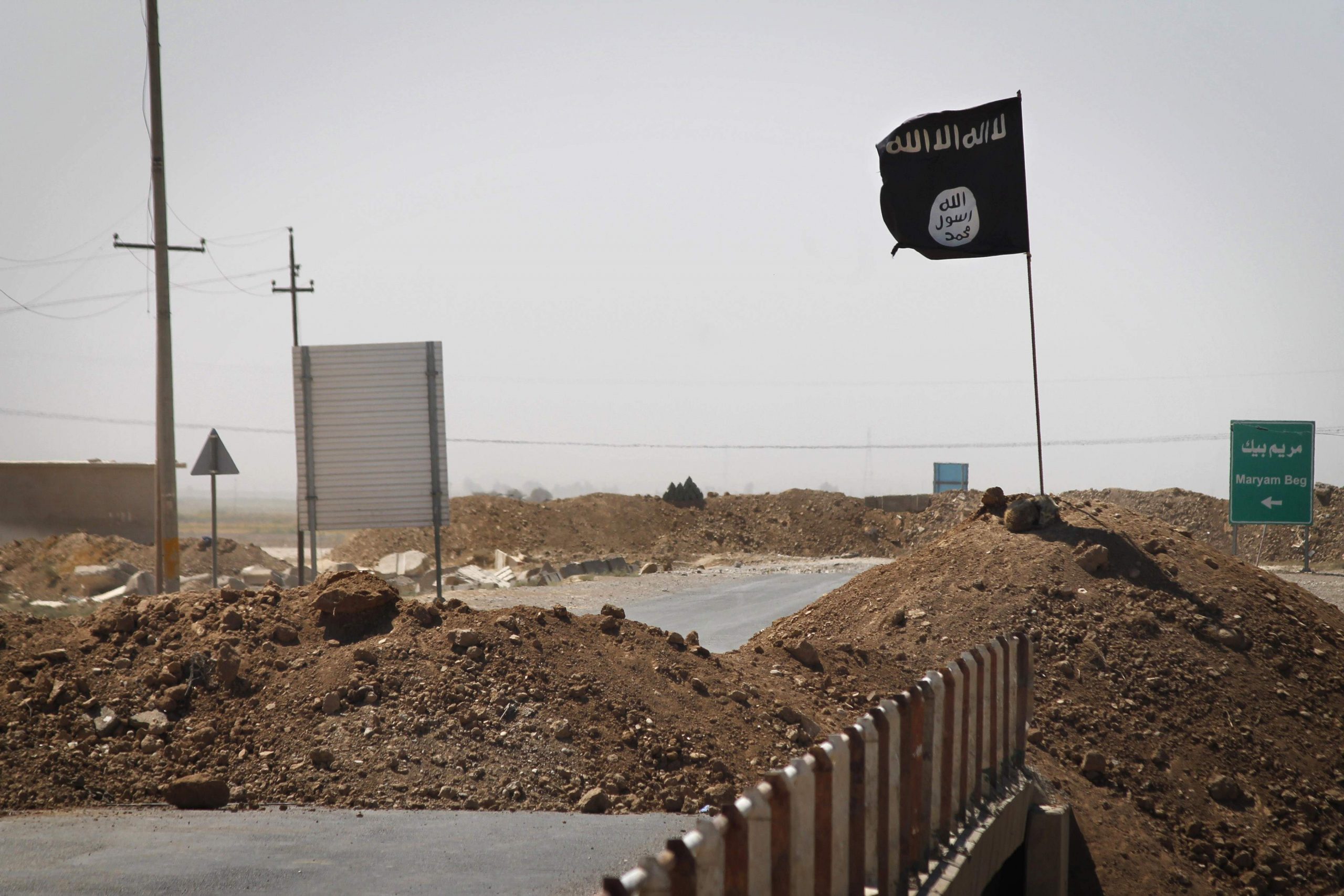
Abu Muhammad al-Adnani, one of Islamic State’s most influential leaders, was assassinated on 30 August in a US drone strike in al-Bab, a small city north-east of Aleppo. His death comes at a difficult time for IS, which has recently lost several senior leaders, as well as territory in northern Syria.
In many respects, Adnani, the highest-ranking Syrian in the militant group, was the most important person in IS. His profile eclipsed even that of its reclusive leader, Abu Bakr al-Baghdadi. Adnani made most of the group’s speeches, and it was his decision to discourage potential foreign fighters from moving to IS-controlled areas last Ramadan. He told Muslims in the West to “open the door of jihad” at home and “make examples of the crusaders . . . until every neighbour fears his neighbour”.
Police interrogation documents of arrested IS fighters in France and Germany show that Adnani was more than just the face of Islamic State’s propaganda arm. He led an internal intelligence unit known as Amni (“security”), which has two roles: to enforce internal discipline and to oversee external operations. Adnani was therefore involved in planning and giving the orders for some of IS’s worst terrorist atrocities in Europe, such as the Paris attacks in November 2015.
He had a solid jihadist pedigree. He started agitating against the Assad regime as early as 2000, then joined al-Qaeda in Iraq (AQI) to fight Western troops in 2003. This established his warrior credentials and is the part of his story that his colleagues have stressed since his death.
“Allah honoured him with many years of jihad and [we] all know the times he and his brothers had to experience in the desert,” read an online tribute, referring to the long years that AQI spent fighting against US military forces.
The themes of warrior sacrifice and patience are pervasive in jihadist literature. Because many of its leaders lack formal religious training, the Salafi-jihadist movement places strong emphasis on praxis as a marker of religious authority, rather than scholarship, learning, or spiritual devotion. This approach empowers fighters in the field and gives them legitimacy.
Analysts have long debated the efficacy of killing terrorist leaders. Conventional wisdom suggests that ideas cannot be bombed out of existence, and the struggle against radical Islam is perhaps the best current example of this. In some instances, however, the strategy has proved highly effective.
Following the 11 September 2001 attacks, the US pursued an aggressive policy against al-Qaeda in the tribal areas of Pakistan. Many of its most powerful figures were slowly identified and then targeted in drone strikes, a process that destroyed the movement’s leadership (and killed countless civilians, too).
The killing of Osama Bin Laden in May 2011 was an important moment in the US “war on terror”. Yet what most undermined al-Qaeda was not Bin Laden’s death but that of his charismatic Yemeni-American counterpart Anwar al-Awlaki a few months later. Awlaki was linked to more than 30 terrorist plots between 2007 and 2011. Among his disciples were the so-called underwear bomber, Umar Farouk Abdulmutallab, who tried to bring down a Northwest Airlines flight on Christmas Day in 2009, and Roshonara Choudhry, who stabbed the Labour MP Stephen Timms at a constituency surgery in 2010 as “punishment” for his having voted in favour of the Iraq War.
The benefits of killing Bin Laden and Awlaki are clear. Al-Qaeda has never recovered from losing two highly influential and experienced leaders in quick succession. Although control of the movement ostensibly passed smoothly to Ayman al-Zawahiri, the group has not restored its operational capacity. Even its official chapter in Syria, Jabhat al-Nusra, announced that it was formally severing ties with al-Qaeda in July (rebranding itself as Jabhat Fateh al-Sham, meaning “the Conquest of Syria Front”).
Yet IS can weather this kind of assault better than al-Qaeda. Despite an onslaught on its leadership over the past 18 months, it has endured. Its ability to hold territory and invoke powerful historical resonances related to the caliphate give it a resilience that al-Qaeda never achieved.
And although IS has lost ground in some areas, it has gained others. Its fighters will continue to govern, establish redoubts and generate income. Islamic history provides an important precedent for the maintenance of the caliphate, even in the absence of the supreme leader – the caliph. When the Mongols ransacked Baghdad in 1258, they killed the last of the Abbasid caliphs, al-Musta’sim Billah. However, the military campaign against them persisted, as did the institution of the caliphate, until a new leader was appointed three years later.
It is too soon to know how the death of Adnani will impact Islamic State. No immediate successor has been announced and the group has previously operated without an official spokesman (from 2006 to 2010, when it used different names: al-Qaeda in Iraq, then Islamic State of Iraq).
For IS members, Adnani’s death has come as a source of joy. Not only has he been “martyred”, but new opportunities have arisen for those left behind. An online eulogy celebrating his passing asked: “Who knew Abu Bakr al-Baghdadi and Abu Muhammad al-Adnani?” – referring to their relative obscurity in the years when Osama Bin Laden led the global jihadist movement. “They were around, unknown, but waiting for their turn.”
Shiraz Maher, an NS contributing writer, is based in the department of war studies at King’s College London. His book “Salafi-Jihadism: the History of an Idea” is published by C Hurst & Co
This article appears in the 07 Sep 2016 issue of the New Statesman, The Three Brexiteers






